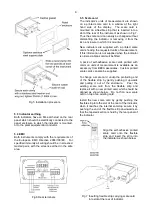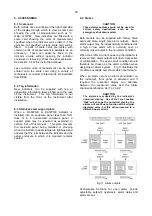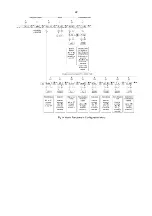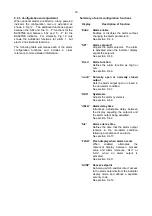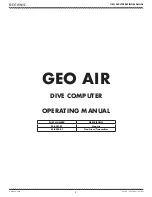
20
9. ACCESSORIES
9.1 Scale card
Both models have a window on the right hand side
of the display through which to view a scale card
showing the units of measurement such as
o
C,
mBar or RPM. New indicators are fitted with a
scale card showing the units of measurement
specified when the indicator was ordered, if the
units are not specified a blank scale card will be
fitted. A pack of scale cards pre-printed with
common units of measurement is available as an
accessory. These can easily be fitted to the
indicator on-site without opening the indicator
enclosure or removing it from the panel enclosure.
See section 5.5 of this instruction manual.
Less common units of measrement can be hand
printed onto the scale card using a variety of
techniques, or custom printed cards are available
from BEKA.
9.2 Tag information
New indicators can be supplied with tag or
application information laser etched onto the rear
of the instrument. This tag information is not
visible from the front of the instrument after
installation.
9.3 Stainless steel support plate
When a BA307NE or BA327NE indicator is
installed into an enclosure panel less than 1mm
thick or in a non-metallic enclosure panel, a
support plate may be required as explained in
section 5.2c of this manual. This plate prevents
the enclosure panel being distorted or creeping
when the indicator panel clamps are tightened and
ensures that the joint between the indicator and the
panel enclosure in which it is mounted remains
sealed.
9.4 Alarms
CAUTION
These alarms outputs should not be used for
critical safety applications such as an
emergency shut down system.
Both models can be supplied with factory fitted
dual solid state, single pole alarm outputs. Each
alarm output may be independently conditioned as
a high or low alarm with a normally open or
normally closed output in the non-alarm condition.
When the 4/20mA current powering the indicator is
removed both alarm outputs will open irrespective
of configuration. The open circuit condition should
therefore be chosen as the alarm condition when
designing an alarm system. Fig 11 illustrates the
conditions available and shows which are fail safe.
When an alarm occurs an alarm annunciator on
the indicator's front panel is activated and if
required the numerical display can alternate
between the measured value and the alarm
channel identification ‘ALr1’ or ‘ALr2’.
CAUTION
The alarms are activated by the indicator’s
numerical display. Use of the Tare Function
‘tArE’ will change the numerical display, the
alarms will continue to function at the original
displayed value, but this will correspond to a
different input current.
Fig 11 Alarm outputs
Configurable functions for each alarm include
adjustable setpoint, hysteresis, alarm delay and
alarm accept.




